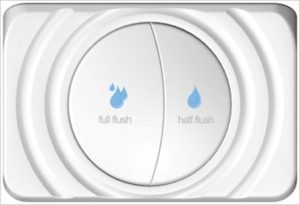January 2017
How You Can Benefit from a Water-Powered, Back-up Sump Pump
The key to maintaining a dry basement is, well, taking every preventive step you can to keep water out. But nature and your indoor plumbing each has a way of sneaking up on you and greeting you one day with a watery mess.

So, and for starters, if your home or neighborhood is prone to basement flooding, you’ll want to install a main sump pump as your first line of defense. They do, however, have one limitation: they run on electricity. Should you therefore lose power, your pump will immediately shut down. Or, what if your pump breaks down for mechanical reasons?
Not to worry, because should it suddenly fail for any reason, you’ll be protected by installing a water-powered back-up sump pump. Each one is apable of pumping more than 1,300 gallons per water out of your basement. And, because water-powered pumps require neither electricity nor batteries to operate – just pressure from your main water line – they can run indefinitely even under extremely trying conditions.
Another big plus about a water-powered sump pump is that it requires virtually no maintenance.
To learn how best to protect your basement and valuables from water and any resulting damage, contact Boden today to request a free in-home proposal. At Boden, we install only high quality sump pumps and, where maintenance is required, you can count on us to keep your sump pumps and all your plumbing in top working condition.
Conserve More Water with a Dual-Flush Toilet
 As technology evolves, you have more and more green living options essentially handed to you on a silver platter. And we’re all better off for it.
As technology evolves, you have more and more green living options essentially handed to you on a silver platter. And we’re all better off for it.
Let’s say, for example, you’re ready to replace an older toilet, the kind that uses between three and five gallons of water per flush. You might be surprised to learn you can no longer purchase such a water guzzler, and that low-flush toilets that use between 1.3 and 1.6 gallons per flush are the new default toilet purchase.
Well, you have another option beside that: a dual-flush toilet for the ultimate in water consumption. Just as its name suggests, a dual-flush toilet has two flushing modes: half-flush for liquid waste, and full-flush for solid waste. These toilets consume only .8 of a gallon for a half flush, and 1.6 gallons for a full flush.
How much water can you save by switching from your older toilet to a dual-flush model. According to the Sierra Club, a family of four will save an average of 7,000 gallons per year.
One more thing about dual-flush toilets to keep in mind: less water does not mean more toilet blockages. Quite the opposite, in fact, since dual-flush toilets have greater flushing power and in-bowl traps about twice the size of older style toilets, thus virtually eliminating the potential for clogged toilets.
Have questions before you buy? At Boden, we’ll be happy to answer them for you and provide the new toilet solution that works best for your home and family. To learn more or schedule installation, contact Boden today, your Sonoma Valley plumbing professionals.
Recent Comments